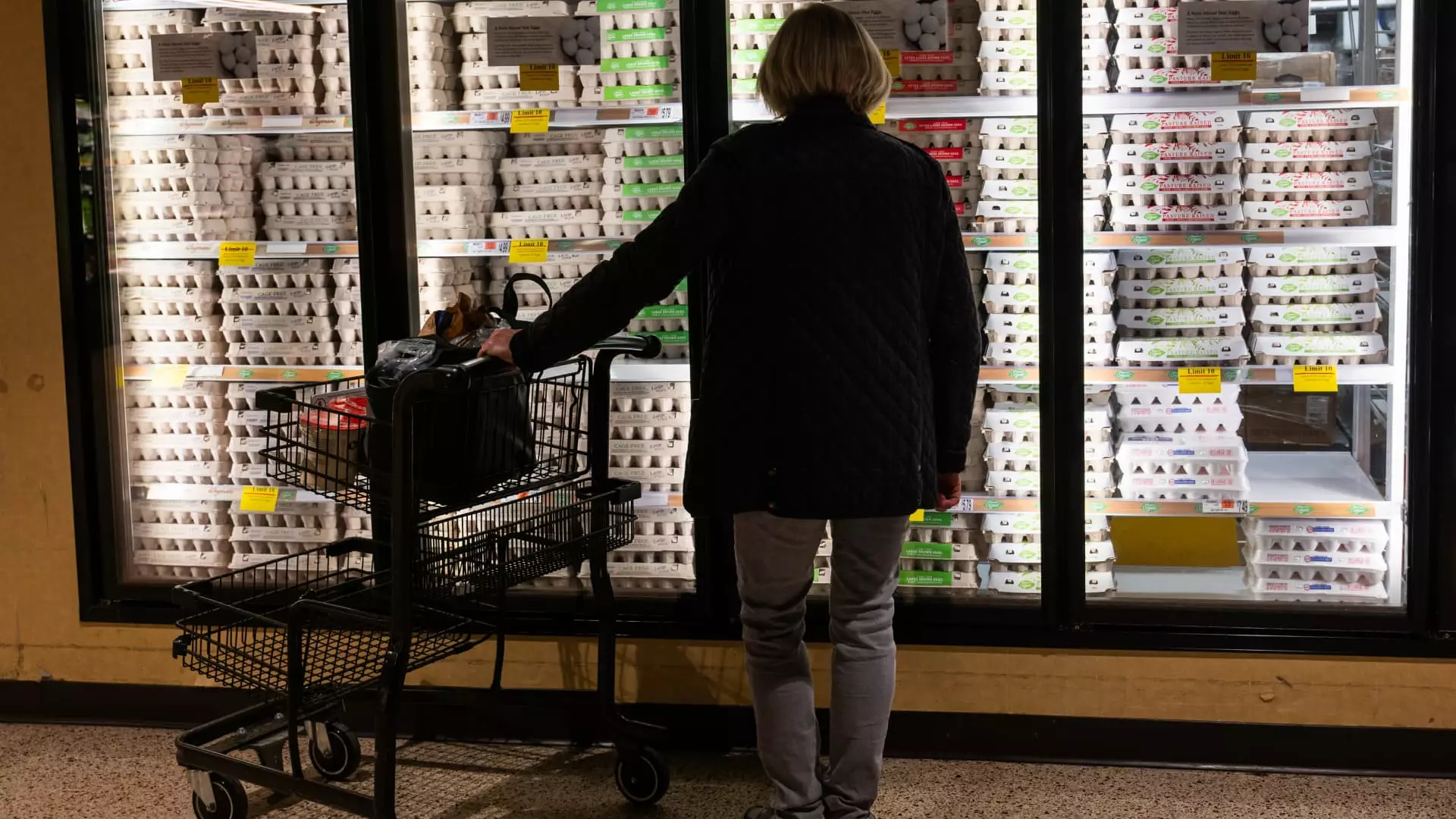In recent weeks, a notable decline in wholesale egg prices has stirred a mix of optimism and skepticism among American consumers grappling with the aftermath of record-high grocery prices. Wholesale prices plunged to $4.83 per dozen, a remarkable 44% decrease from February’s shocking peak of $8.58. While this sudden downturn may appear as a beacon of hope, the reality is far more complex, marked by uncertainty regarding how retail prices will adjust and the factors that brought about this initial surge in costs.
The decline is primarily the result of a tapering off in bird flu outbreaks combined with waning consumer demand. As the U.S. Department of Agriculture notes, these developments have allowed the nation’s egg supply to stabilize, yet the transition from wholesale pricing to what consumers pay at the checkout line poses significant challenges. There is a considerable lag, often stretching to two or three weeks, between the drop in wholesale figures and the corresponding adjustment in retail prices. Essentially, consumers are still feeling the pinch of inflated prices even as wholesalers celebrate reduced costs.
Consumer Behavior: The Paradox of Supply and Demand
The dynamic between consumers and egg supply is particularly intriguing. With the specter of high prices looming large, many households have responded by stockpiling eggs—an instinctive reaction reminiscent of the panic buying witnessed during the early days of the COVID-19 pandemic. This behavior has created a false sense of security, as demand has decreased in the short term, thereby alleviating some supply shortages. However, it also raises red flags about the potential for future instability: consumers stocking up today could lead to a pronounced drop in demand when they finally do decide to replenish their kitchens.
Moreover, as Easter approaches—a time when egg consumption traditionally spikes—the interplay of demand and retail psychology could further complicate the pricing landscape. While some may argue that egg prices are set to decline, the looming holiday may keep demand elevated, potentially nullifying any immediate relief for consumers. It’s a classic case of supply responding to demand, albeit in a distorted manner that leaves consumers stuck in a cycle of apprehension.
Market Conspiracies and Investigations
Complicating matters further is the antitrust investigation being pursued by the U.S. Department of Justice, aimed at major egg producers accused of manipulating prices and tightening supply chains. This could lead to a plethora of legal implications that may add another layer of complexity to an already intricate market environment. The suspicion that corporate entities may conspire to inflate prices for larger profit margins reflects a deeper issue of trust between consumers and suppliers. It casts a long shadow on the industry and reinforces the belief that consumers are frequently at the mercy of producers’ decisions rather than being active participants in the marketplace.
Given the history of mass marketing manipulation leading to inflated prices, it raises the question: Is it time for a more stringent regulatory approach to ensure a fair and transparent market for essential goods like eggs? The reluctance of some producers to pass on savings to consumers, despite declining wholesale prices, only intensifies calls for accountability in the sector.
A Fragile Recovery
Ultimately, while the decline of wholesale egg prices offers a glimmer of hope, it serves as a stark reminder of the volatile nature of agriculture markets and consumer goods in general. The interplay of factors—from supply chain disruptions to consumer behavior and macroeconomic concerns—creates an environment rife with uncertainty. Analysts like Karyn Rispoli and Kevin Bergquist express cautious optimism, yet the fluctuations we have observed raise profound questions about the resilience of our current system.
The egg market’s recent history is both a cautionary tale and a call to action for consumers, industry stakeholders, and regulators alike. As the nation’s food supply chain endures these ups and downs, one truth remains crystal clear: the come-and-go volatility of commodity pricing continues to wreak havoc—not just on budgets, but on trust, transparency, and the very framework of our food system.

